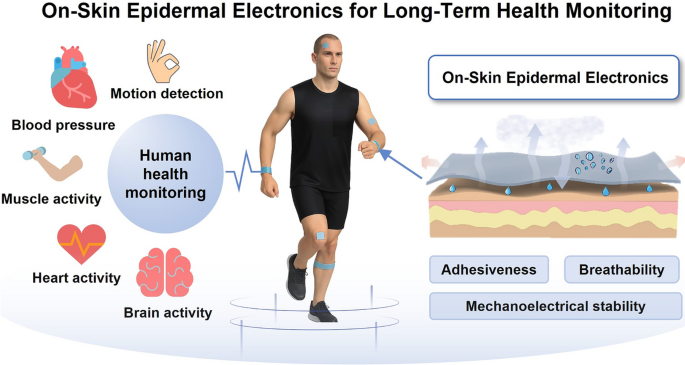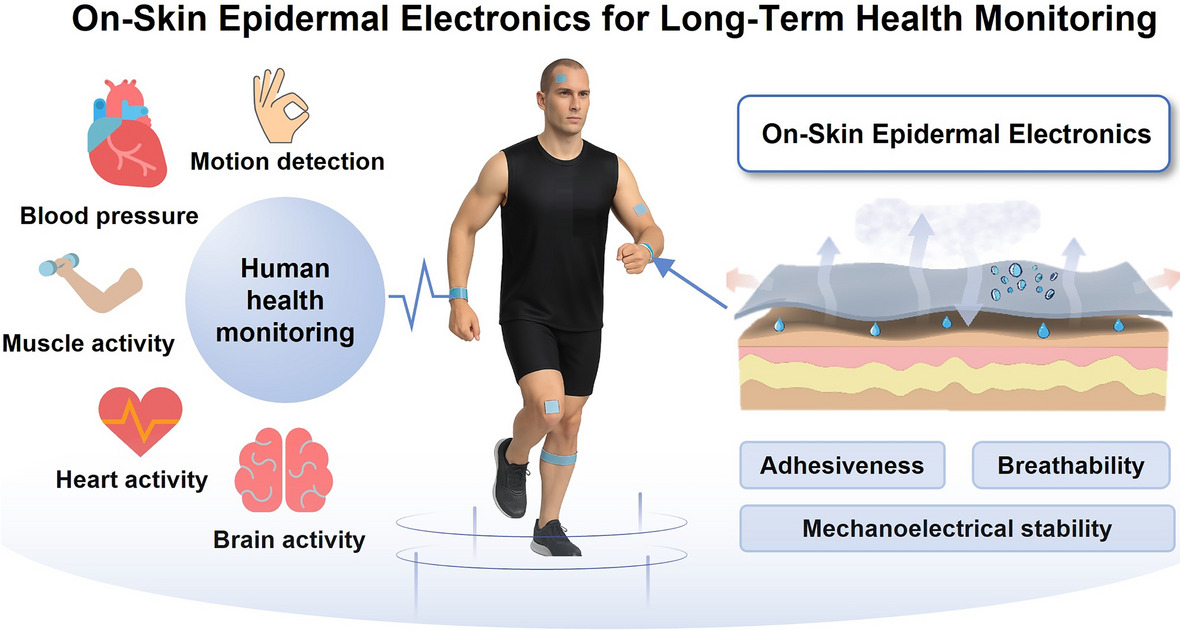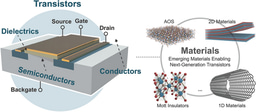
As global healthcare shifts toward personalized, preventive, and remote solutions, the limitations of conventional rigid wearables—poor skin conformity, motion artifacts, and lack of breathability—are becoming increasingly apparent. Now, researchers from Xi’an Jiaotong University, led by Professor Xiaoliang Chen, have published a comprehensive review on on-skin epidermal electronics that promises to overcome these barriers. This work offers a detailed roadmap for developing next-generation wearable devices capable of long-term, high-fidelity health monitoring.
Why Epidermal Electronics Matter
- Seamless Skin Integration: Ultrathin, soft, and lightweight, these devices conform to the microscale topography of human skin without causing discomfort or hindering natural motion.
- Long-Term Stability: With advanced materials and structural designs, they maintain stable adhesion, breathability, and mechanoelectrical performance over days or even weeks.
- Multimodal Sensing: From electrophysiological signals (ECG, EMG, EEG) to biophysical parameters (strain, temperature, hydration), epidermal electronics enable continuous, real-time health assessment.
Innovative Design and Features
- Material Diversity: The review covers a broad spectrum of functional materials—metals (Au, Ag), carbon nanomaterials (graphene, CNTs), conductive polymers (PEDOT:PSS), liquid metals, and hydrogels—each tailored for specific applications and performance requirements.
- Structural Engineering: Strategies such as serpentine interconnects, nanomesh architectures, Kirigami cuts, and microcrack designs are employed to enhance stretchability, durability, and skin conformability.
- Multifunctional Integration: Devices are designed to simultaneously achieve self-adhesion, high breathability (WVTR > 1000 g m-2d-1), and mechanoelectrical stability under dynamic skin deformation.
Applications and Future Outlook
- Biophysical Monitoring: Epidermal sensors track motion, respiration, blood pressure, speech, and spinal posture—enabling early detection of diseases like Parkinson’s and cardiovascular disorders.
- Electrophysiological Recording: Ultra-conformal electrodes provide high-resolution ECG, EMG, and EEG signals, supporting applications in neonatal care, neurological rehabilitation, and brain-computer interfaces.
- AI-Assisted Diagnostics: Integration with machine learning algorithms enables real-time signal processing, gesture recognition, and predictive health analytics.
- Challenges and Opportunities: The review highlights key hurdles—including multimodal signal coupling, power management, biocompatibility, and scalable manufacturing—and outlines future directions for clinical translation.
This comprehensive review establishes on-skin epidermal electronics as a transformative platform for continuous, imperceptible, and intelligent health monitoring. Stay tuned for more groundbreaking work from Professor Xiaoliang Chen and the team at Xi’an Jiaotong University!
Follow the Topic
-
Nano-Micro Letters

Nano-Micro Letters is a peer-reviewed, international, interdisciplinary and open-access journal that focus on science, experiments, engineering, technologies and applications of nano- or microscale structure and system in physics, chemistry, biology, material science, and pharmacy.






Please sign in or register for FREE
If you are a registered user on Research Communities by Springer Nature, please sign in